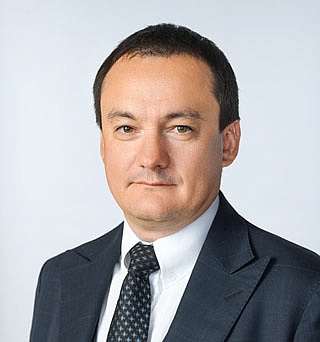Protection of patents and trademarks in the Eurasian economic union
19 October 2017Eurasian Economic Union (hereinafter, EAEU or Union) is the international economic integration organization founded under the Treaty on the Eurasian Economic Union entered into force on January 1 2015. As of end of August 2015 Belarus, Kazakhstan, Russia, Kyrgyzstan and Armenia are members of the Union.
There are no customs borders between the countries of EAEU and the goods can freely move within this single market space. In this regard the matter of protection of IP has become very important taking into account that every country-member has its own IP legal regulations which may have certain peculiarities from country to country.
Every EAEU country-member participates in all major international treaties regarding trademark and patent protection. Aside from that, Russia, Kyrgyzstan, Armenia and Kazakhstan are members of WTO and bound with obligations under TRIPS agreement. In view of these facts legislation of EAEU members is mostly uniform which makes cooperation in the field of intellectual property much easier.
Trademarks
There are various ways to obtain a trademark protection in countries of the Union, including through the national filing system and filing under Madrid trademark registration system.
In Russia, legislation on trademark protection is provided in Part IV of the Civil Code since 2008. In other EAEU countries, civil codes include only general provisions regulating legal protection of all intellectual property and some basic provision concerning certain types of subject matters. In these countries, issues relating to legal protection of trademarks are addressed in detail in special laws. In Armenia it is the law “On trademark” (2010); in Belarus, “On trademarks and service marks” (1993); in Kazakhstan, law “On trademarks, service marks and appellations of origin of goods” (1999); in Kyrgyzstan, law “On trademarks, service marks and appellations of origin of goods” (1998).
National trademark-related legislations of EAEU member-countries have a lot in common. For instance:
- Legal protection is granted to a trademark on the basis of its state registration;
- The exception is protection of well-known trademarks that is granted due to the provisions of Paris Convention;
- Examination of applications is performed in two stages: formal (preliminary) examination and substantial examination;
- There are similar conditions and procedures for establishing trademark priority, including convention and exhibition priority;
- Substantial examination includes reviewing of both absolute and relative grounds;
- Division of an application is possible before a decision on the parent application is adopted;
- PTO’s decisions and trademark registrations may be opposed in administrative and/or judicial bodies;
- There is the possibility for termination of the trademark protection due to its nonuse.
In the meantime, there may be some differences in the local laws as regards to prosecution procedures as well as approaches of examiners.
Aside from national registration, trademark protection can be obtained on the territory of EAEU member-countries on the basis of the Madrid International Trademark Registration System.
Regional system of trademark protection in EAEU
The countries-members of EAEU have agreed on the draft of the Treaty on Trademarks, Service Marks and Appellations of Origin of Goods of the Eurasian Economic Union introducing a regional trademark and service mark protection system, providing establishment of a Union Trademark, as well as regional system for protection of appellations of origin of goods (geographical indications).
The said Draft Treaty does not envisage creation of a regional trademark office, rather it provides for collaboration of all EAEU countries’ PTOs in examining of an application for registration of a Union Trademark, which would be valid in all EAEU countries. The Draft Treaty also provides that the Eurasian Economic Committee (EEC) will manage the Unified Register of Union Trademarks. All Union Trademark infringement cases on the territory of any Union’s country will be handled in accordance with national legislation of this country, and the liability for the infringement of Union Trademark will be the same as for infringement of a trademark registered under the national procedure or an international registration valid in a given jurisdiction.
In order to register a Union Trademark, it will be necessary to file a single application in PTO of any EAEU country at the applicant’s discretion. The application is to be filed in Russian regardless of what PTO is chosen by an applicant as a filing office.
Applicants from countries outside EAEU shall act through patent attorneys registered registered in the corresponding filing office.
Preliminary (formal) examination will be carried out only by the filing office and the filing fee will be equal to the fixed fee in that filing office. In case of positive result of preliminary examination, the application will be published on the EEC’s official site. After that, interested persons will be able to provide the filing office with their observations regarding registration of the claimed trademark.
Examination of a sign claimed as a trademark will be carried out by each national office of EAEU countries. The third parties’ observations, if submitted, would to be considered by all national PTOs during the examination of the claimed mark. In the course of examination both absolute and relative grounds for refusal will be checked.
On the basis of national PTOs’ opinions, the filing office will either adopt a decision to register a Union Trademark, or notify the applicant of the grounds for refusal communicated to the filing office by national PTOs. Any national PTO’s refusal to register the claimed mark may be appealed in accordance with the respective country’s procedure for such an appeal.
In case of positive opinions from all national PTOs, the filing office will make a Decision of Registration of a Union Trademark and enter the mark into the Unified Register of EAEU Trademarks.
The Draft Treaty provides that it will be possible to oppose a registered Union Trademark in a competent body of any EAEU country in accordance with procedure set forth by respective country’s legislation, but only on the grounds provided by the treaty. Meanwhile, if a Union Trademark is ruled invalid by a decision of any competent body, the trademark owner will be entitled to file a national trademark application (or applications) preserving the priority date of the invalidated registration.
The exclusive right to a Union
Trademark will be valid for 10 years from the filing date with an option of multiple renewals each time for 10 more years. In order to renew a Union Trademark registration, it will be necessary to file a request to the filing office and pay renewal fees set forth in each of EAEU countries.
The Draft Treaty provides that a Union Trademark registration may be terminated early due to non-use. At the same time, use of the Trademark at least on the territory of one of the EAEU countries would be recognized as sufficient use for the purposes of maintaining the registration.
It is expected that the said treaty on the regional trademark will become effective at the beginning of the next year.
Appellations of origin of goods (geographical indications) in EAEU countries
EAEU countries have national registers of protected appellations of origin, including both appellations related to geographical objects inside that country and appellations related to the objects on other countries’ territory. New entries are registered in those Registers by national PTOs under the procedures set forth by national laws. The procedures provide filing an application for registration of an appellation of origin and granting the right to use the said appellation or filing an application for granting the right to use the registered appellation of origin.
EAEU’s Draft Treaty provides recognition of appellations of origin registered in EAEU countries as appellations of origin protected on the territory of all EAEU countries. It will be carried out by registration of the nationally-registered appellations of origin into the Unified Register of Union Appellations of Origin and issuance of a unified certificate of protection. Under the Draft Treaty, the Union countries shall not be obliged to protect another country’s appellations of origins that are not protected or ceased to be protected in that country.
In order to obtain protection to appellations of origin on the Union territory applicants from EAEU countries will file corresponding applications to their national PTOs. Applicants from other countries may choose any EAEU country’s PTO as their filing office. Procedure of registration of appellation of goods in EAEU countries’ national PTOs and fees for filing an application are set forth by the each EAEU country’s legislation, while a fee for registration of appellation of origin in the Unified Register will be determined as a sum of registration fees of all Union countries. For each appellation of origin registered in Unified Register the right holder will be granted with a single document certifying both protection of appellation of origin and his right to use it on the Union territory.
The Draft Treaty therefore did not provide for examining appellations of origin applications by each national PTO of EAEU countries; in fact, Union countries recognize as valid on the Union territory appellations of origin protection granted by a filing office upon payment of the respective fees by the applicant. This procedure will simplify obtaining of protection for appellations of origin on the territory of EAEU.
Patents
Technical solutions may be protected in Russia and other countries of the Union by a patent for invention or a patent for utility model. Also, there is the Eurasian Patent Convention (EAPC) which provides the possibility to obtain a regional patent for an invention valid in all Member-States.
The EAPC covers more countries than the Eurasian Economic Union, viz: Armenia, Azerbaijan, Belarus, Kyrgyzstan, Kazakhstan, Russia, Turkmenistan and Tajikistan. Hence, when making a decision to protect an invention the applicant should consider whether to file a Eurasian patent application covering eight countries or national applications in selected countries. The Eurasian patent system is used by applicants from over 80 countries of the world.
To perform administrative tasks relating to the functioning of the Eurasian patent system and grant of Eurasian patents, the Eurasian Patent Convention established the Eurasian Patent Organization with the Eurasian Patent Office (EAPO) acting as its executive body. The patent issued by the Eurasian Patent Office is in the Russian language and shall have the same effect in Member-States as national patents for inventions.
The EAPC does not recognize as inventions the following subject matters in those cases where a Eurasian application or a Eurasian patent are directly pertinent to any of the above-listed subject matter as such:
- discoveries;
- scientific theories and mathematical methods;
- presentation of information;
- methods of economic organization and management;
- symbols, schedules and rules, including rules of games;
- methods for performing mental acts;
- algorithms and computer programs;
- topographies of integrated circuits;
- projects and plans for structures and buildings and for land development;
- solutions concerning solely the outward appearance of manufactured goods and aimed at satisfying aesthetic requirements.
At that, as in many other jurisdictions Eurasian patents shall not be granted for:
- plant varieties and animal breeds;
- topology of integrated circuits;
- inventions, the commercial use of which it is essential to prevent, for the purposes of protecting public order or morality, including the protection of the life and health of people and animals or the protection of plants, or in order to prevent serious damage being caused to the environment. In that regard, such use may not be considered such, solely on the grounds that it is forbidden by the legislation of one or more Member-States.
Any dispute relating validity of the Eurasian patent in a given Member-State, or the infringement, in a given Member-State, of a Eurasian patent shall be resolved by the national courts or other competent authorities of that State on the basis of EAPC and the Patent Regulations. The decision shall have effect only in the territory of the Member-State.
Conclusion
The above demonstrates that the legal environment on IP protection within the Eurasian Economic Union is quite unified and harmonized with the major International Treaties that ensures appropriate legal protection of IP assets and encourages foreign companies doing business in the given jurisdictions.










